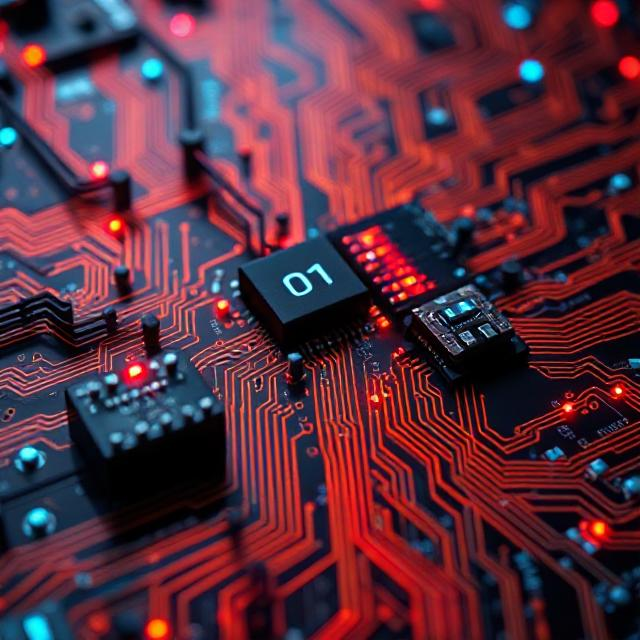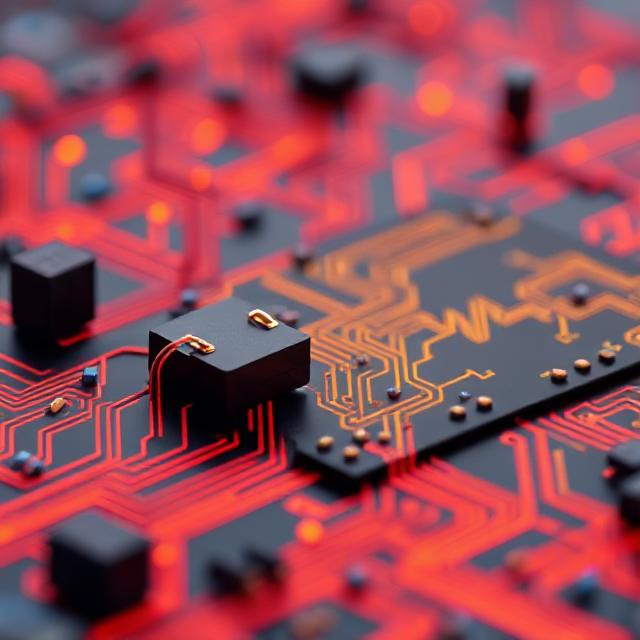In the world of electronics, communication between the analog and digital realms is essential. Most real-world signals—such as sound, temperature, light, and pressure—are analog in nature, while modern electronic systems, especially microcontrollers and computers, operate in the digital domain. To bridge this gap, two crucial devices are used: Analog to Digital Converters (ADC) and Digital to Analog Converters (DAC). These devices enable data conversion between continuous (analog) and discrete (digital) formats, facilitating accurate signal processing, control, and communication.

1. Analog to Digital Converters (ADC)
An Analog to Digital Converter (ADC) transforms an analog input signal into a corresponding digital signal. This is a foundational step in any system that processes real-world analog data using digital circuits.
a) Working Principle
The ADC works by sampling the analog input at discrete time intervals and then quantizing the voltage level into a finite number of steps, each represented by a binary number. This process involves three major steps:
-
Sampling: The analog signal is measured at specific intervals (sampling rate).
-
Quantization: Each sample is approximated to the nearest level within a finite set.
-
Encoding: The quantized value is encoded into binary form.
b) Types of ADC
-
Successive Approximation ADC (SAR): Offers a good balance between speed and accuracy. Common in microcontrollers.
-
Flash ADC: Extremely fast but uses many comparators. Suitable for high-speed applications.
-
Sigma-Delta ADC: High resolution, slower, ideal for audio and instrumentation.
-
Dual-Slope ADC: High accuracy, mostly used in digital multimeters.
c) Applications
-
Medical devices (ECG machines, digital thermometers)
-
Audio recording and processing
-
Digital sensors and data acquisition systems
-
Mobile phones and digital cameras
2. Digital to Analog Converters (DAC)
A Digital to Analog Converter (DAC) performs the reverse operation of an ADC. It converts binary data (digital signals) into a corresponding analog voltage or current.
a) Working Principle
A DAC interprets a binary number and generates an output signal with a voltage (or current) level corresponding to that digital value. The analog output can be used to control physical systems or produce audio and video signals.
b) Types of DAC
-
Binary Weighted DAC: Uses resistors weighted by powers of two. Simple but not scalable for high-bit resolutions.
-
R-2R Ladder DAC: Uses resistors of only two values (R and 2R), making it more practical and accurate.
-
Sigma-Delta DAC: Similar to its ADC counterpart, used in high-fidelity audio applications.
-
PWM-based DAC (Pulse Width Modulation): Uses digital pulses to approximate analog levels. Common in low-cost systems like microcontrollers.
c) Applications
-
Audio signal generation (e.g., speakers, headphones)
-
Video signal processing
-
Industrial automation and motor control
-
Analog control signals in instrumentation
3. Key Performance Parameters
Both ADCs and DACs have performance metrics that are crucial in selecting the right device for a specific application:
-
Resolution: Number of bits used in the conversion. Higher resolution means greater precision.
-
Sampling Rate (for ADCs): How fast the analog signal is sampled.
-
Settling Time (for DACs): Time required to reach the final analog output.
-
Accuracy and Linearity: How close the output matches the expected signal.
-
Signal-to-Noise Ratio (SNR): A measure of signal clarity versus background noise.
4. Importance in Modern Electronics
ADCs and DACs are central to the functioning of many modern electronic devices. In smartphones, for instance, microphones and cameras produce analog signals that are digitized via ADCs. After processing, the digital data may be converted back to analog form using DACs to drive speakers or analog displays.
In industrial automation, sensors often provide analog outputs, which are digitized for processing by a PLC or microcontroller. Similarly, actuators and motors may require analog control signals derived from digital logic through DACs.
The Internet of Things (IoT), medical diagnostics, telecommunications, and digital entertainment all rely on the seamless operation of ADCs and DACs to bridge the analog-digital divide.
Conclusion
Analog to Digital and Digital to Analog Converters are indispensable in modern electronic systems. They enable digital systems to interact with the analog world by ensuring smooth and accurate signal conversion. As technology continues to advance, the demand for high-speed, high-resolution, and energy-efficient converters will only grow. Understanding their operation, types, and applications is crucial for anyone involved in electronics, embedded systems, or communication engineering.










